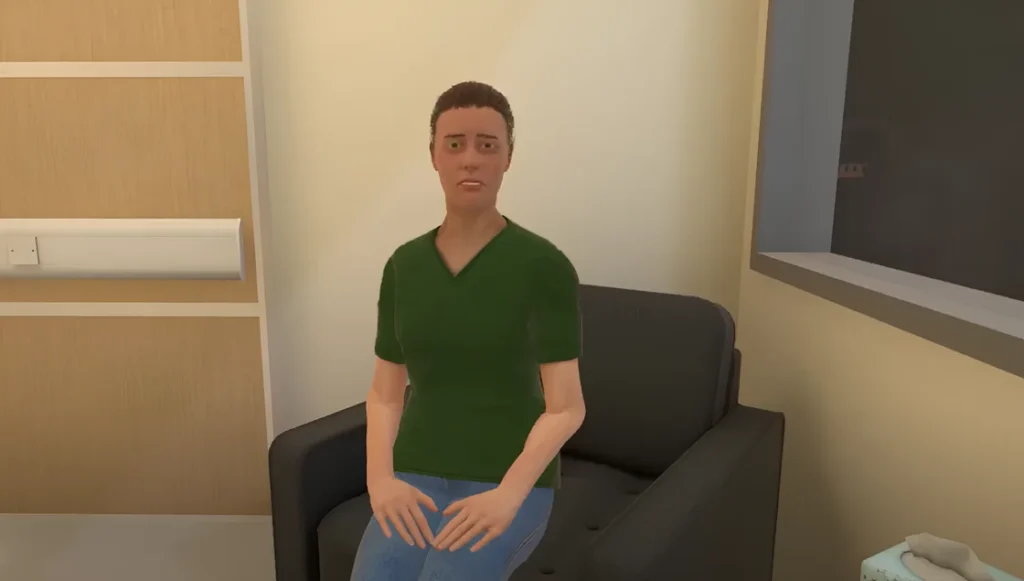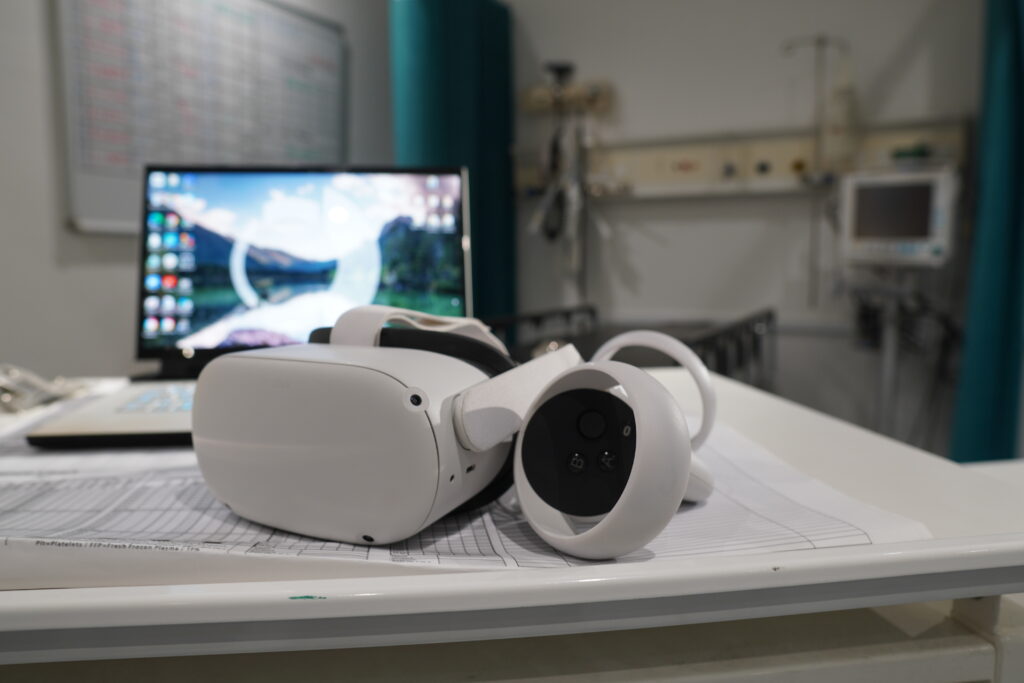In the simplest of terms, AI is “artificial intelligence”, but more practically, AI involves machine learning, where a machine can take in information, process it, and reason. This is much different from the standard input-output process, but what does it look like in action for healthcare education and training? That can be a bit more complicated or nuanced.
According to the Healthcare Simulation Dictionary, AI is “a machine-based system that can, for a given set of human-defined objectives, make predictions, recommendations or decisions influencing real or virtual environments”.
Beyond the general definition, in healthcare simulation, AI is often referred to when talking about the underlying technology of a given simulation.
At Oxford Medical Simulation, for example, scenarios that use natural language processing and large language models (LLMs) enable voice control, leveraging AI to facilitate natural conversation between learners and virtual patients.
That’s not the only way that AI is being used in healthcare simulation – educators are leveraging this advanced technology to support administrative tasks, ensure continuity or consistency, and enhance personalized teaching.
Some educators have reported using AI to develop standardized tools that assist in writing measurable objectives, capturing objective data, or decreasing human error during assessments.
AI is not a standalone tool designed to ‘set and forget’. For specific fields such as healthcare, and depending on how it’s being used, it’s imperative that whatever output AI generates be double checked for accuracy.
Healthcare professionals and educators understand the importance of clinical accuracy, especially when teaching concepts and skills to learners. AI can be incredibly useful in streamlining efficiencies and workflows, ensuring educators get more focused time in their work with learners.

There are other advantages to AI in healthcare simulation, too.
A recent white paper supports the notion that AI can be beneficial for psychomotor skills and can support both deliberate practice and competency assessments.
Additionally, AI can provide more personalized feedback to learners, bolstering the deliberate practice and enhancing meaningful learning experiences on an individual level.
AI is being used for “advanced communication skills, like delivering bad news, discussing care goals, de-escalating challenging situations, addressing professionalism lapses, and responding to discrimination or harassment.”
This, in turn, is helping learners practice with empathy and work on managing emotions, even in difficult conversations.
AI is also being used to “enhance mental processes like knowledge acquisition, problem solving, decision making, and critical thinking” by providing cascading interactions. In other words, while the core of the simulation is standardized and learners will be guaranteed to see the same condition or situation, AI also allows for dynamic interactions, and learners’ actions can result in different outcomes, more closely reflecting real life practice.
In OMS scenarios, AI enhances the learning experience by creating a dynamic, realistic simulation for advanced learners. This is particularly evident with the integration of a large language model for communication, allowing for open-ended dialogue with virtual patients that mirrors real-world clinical interactions.

In one scenario, learners meet Natalie, a concerned daughter of a patient whose health is declining. The learner must talk with Natalie to clearly communicate the context of the situation, actively listen, and demonstrate empathy in supporting her and her father’s care. Due to the underlying AI, Natalie will respond to the learner’s communication in real time, and her responses will differ based on the learner’s word choice or intent, just as in real life.
Following the scenario, the learner can identify what went well and where there is room for improvement by reading the detailed feedback from the simulation.
This scenario closely reflects real world practice and provides a psychologically safe environment that can help learners feel more prepared and confident in their ability to handle difficult situations and manage hard conversations with patients, families, caregivers, or colleagues.
While it’s important to understand the limitations of AI and closely monitor its output, there are many significant benefits to using this technology as it becomes more integrated into workflows and in healthcare education and training.
To learn more about the latest in VR, AI, and clinical education, or to stay up to date on the latest developments from OMS, sign up for our newsletter.
